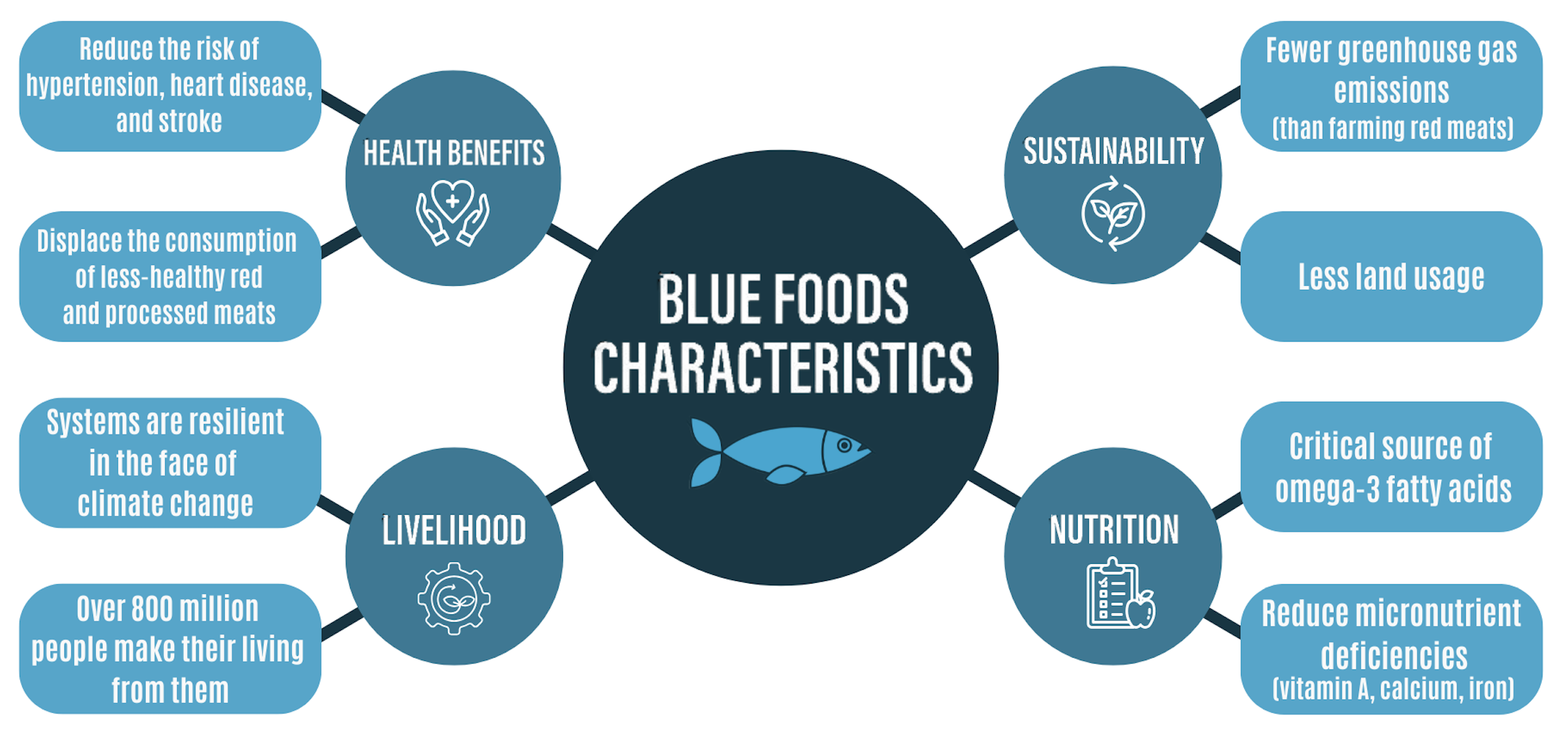What are Blue Foods?
"Blue foods" are foods derived from aquatic animals, plants, or algae. Some examples include: salmon, mussels, sardines, or tilapia (what we farm in the BiG project).

Scroll to learn more!
LEARN ABOUT BLUE FOODS AND THEIR IMPORTANCE IN OUR WORLD

While current global food systems produce enough calories to keep pace with U.S. population growth, many Americans consume nutrient-poor diets that contribute to the rising incidence of diet-related obesity and chronic diseases. The Midwest, where the BiG project is located, has the highest rates of obesity in the country. Incidentally, it is also the area with fewest number of aquaculture farms, and that consumes the least seafood.
Blue foods, as a critical source of nutrition, can improve human health by reducing the risk of diet-related non-communicable conditions such as hypertension, heart attacks, certain cancers, and strokes.
Blue food production systems are typically much more sustainable than other meat sources. Here are two examples:
Aquaponics is an integrated food production system that combines aquaculture and plant cultivation (often using hydroponics) into a single closed or semi-closed loop system. These systems can intensively produce diverse, high-quality seafood and specialty crops in controlled environments, aligning with the FAO’s criteria for climate-smart agriculture.
Aquaculture and capture fisheries generally produce fewer greenhouse gas emissions and require less land than red meat farming, with many aquaculture industries even outperforming commercial chicken production.
As mentioned previously, calorie production is not an issue in keeping pace with U.S. population growth. However, many Americans consume nutrient-poor diets that contribute to the rising incidence of diet-related obesity and chronic diseases. It is critical for U.S. agriculture to shift its focus away from merely producing larger quantities of food and toward the production of a diverse range of nutritious foods using resilient and sustainable methods.
On average, blue foods offer significantly more nutritional benefits than land-based animal foods. They can help reduce micronutrient deficiencies (e.g., vitamin A, calcium, iron) and provide a critical source of omega-3 fatty acids, while also being an excellent protein source in most cases. Not only does this address malnutrition, but it also helps combat overnutrition by displacing the consumption of less-healthy red and processed meats, which can contribute to adverse health outcomes.
With over 800 million people worldwide relying on blue food production as their primary source of income, stable distribution is crucial. However, globalization has made the seafood system more vulnerable to systemic shocks that disrupt the flow of products, leading to price increases and shortages.
The U.S. is the largest importer of seafood (6.1 billion pounds in 2020), yet its domestic production ranks only 18th globally. This imbalance between relatively low domestic production and high import demand became even more evident during the recent pandemic and ongoing climate change. Low-income populations often struggle to access nutritious foods, including blue foods. It is essential for small farms and local communities to diversify and incorporate aquaculture into their farming portfolios to meet the growing demand from consumers, restaurants, and food services for locally produced foods.
Why is the BiG project working to “make blue foods green”?
The When Blue is Green project is a research initiative funded by the USDA National Institute of Food and Agriculture (NIFA). NIFA’s mission is to promote long-term agricultural viability, and through the Sustainable Agricultural Systems (SAS) grant, this initiative focuses specifically on fostering economic and agricultural growth in rural America.
The BiG project addresses the challenges of blue food production, particularly through aquaponics, with the aim of making it accessible to stakeholders in the Midwest. Its overarching goal is to increase local and regional production of nutritious, affordable seafood with a minimal environmental footprint, ultimately diversifying U.S. agricultural systems and dietary patterns.
![]()
This work is supported by the USDA National Institute of Food and Agriculture, under award number 2023-68012-39001
